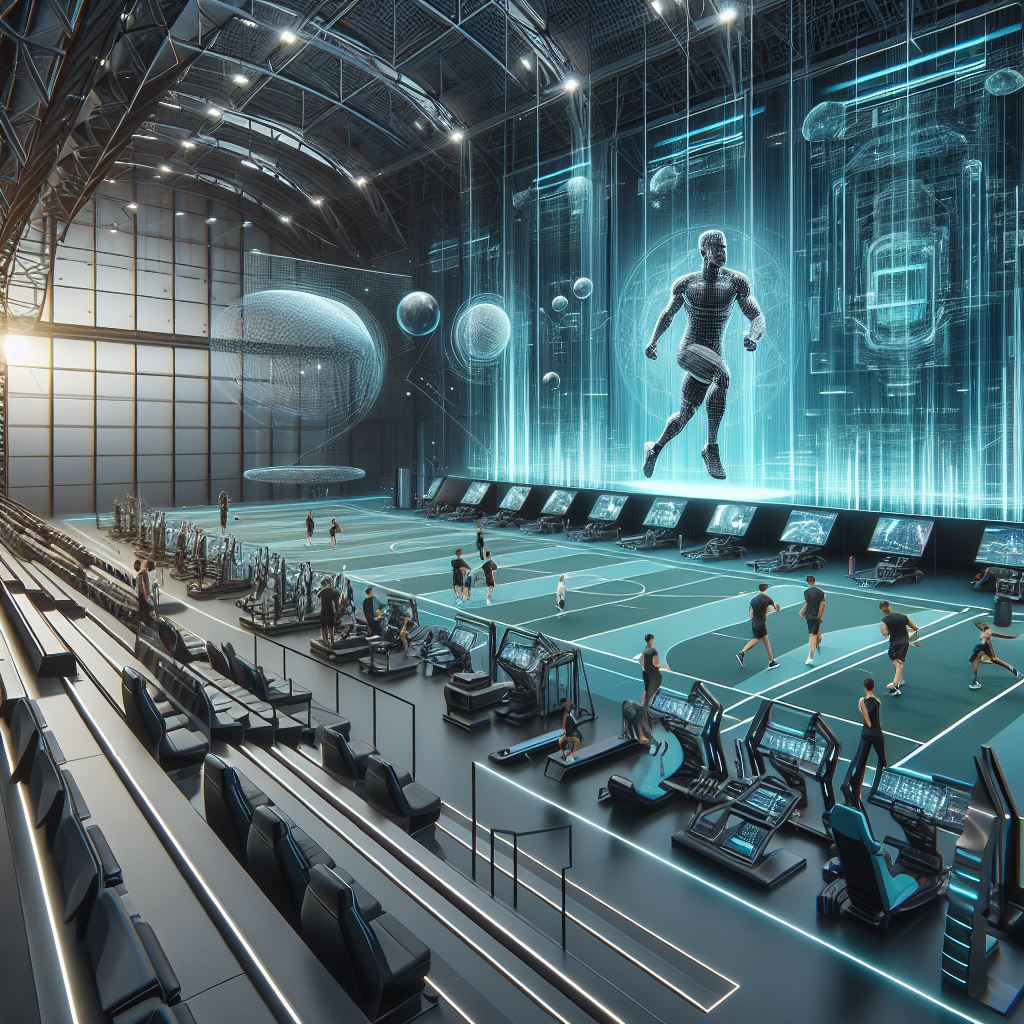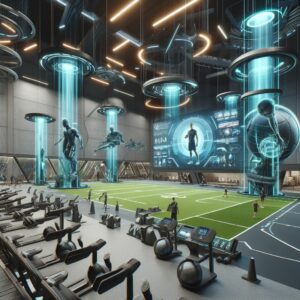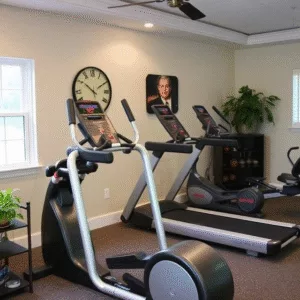
Are you an athlete, coach, trainer or physiotherapist who wants to improve your performance in sports? Is high performance training for sport something, that might interest you? Do you want to learn the latest scientific principles and practical techniques for developing your physical, technical, and tactical skills? Do you want to know how to design effective training programmes that suit your individual needs and goals?
If, you answered yes to any of these questions, then this blog post is for you. In this post, we will cover everything you need to know about high performance training for sport. We will explain what high performance training is, why it is important, how it works and what are the best practices and methods for applying it in different sports and contexts.
High Performance Training for Sport
A Comprehensive Guide
I believe everyone can and should be involved in sport, in one way or another. The only difference between us all, is the difference level we train at. What I have discovered over years of observation, is that for some people sport is just a way to tool to a better physique.
But for others, like myself, sport is all about high performance. It’s great to look good and of course it’s a great way to improve your physical and mental health. But if, you’re involved in high performance training for sport competition, being your best is a must.
What is High Performance Training?
High performance training (HPT) is a term that refers to the systematic application of scientific knowledge and evidence-based practices to enhance athletic performance. HPT aims to optimize the physical, technical, tactical, psychological, and environmental factors that influence athletic performance1.
HPT is not just about lifting weights or doing exercises. It is about understanding how the body works at different levels of intensity. And complexity, how movement patterns are influenced by biomechanics and motor control, how skills are learned and improved through practice and feedback.
It’s how strategies are developed and executed through decision making and communication. It is also about how emotions are managed through motivation and coping skills. And how the environment affects performance through temperature, humidity and altitude. There’s so much more to consider when high performance training is involved.
HPT is also not just about individual athletes or teams. It is about creating a holistic approach that involves multiple stakeholders such as coaches, trainers, physiotherapists, nutritionists, psychologists, managers, etc., who work together to support the athlete’s development throughout their career2.

Why is High Performance Training Important?
High performance training is important because it can help athletes achieve their full potential in sports. By applying HPT principles and methods correctly and consistently over time3, athletes can:
- Improve their physical fitness (strengths), endurance (aerobic capacity), power (explosiveness(joint mobility), speed (agility), flexibility (range of motion), mobility (joint stability), balance (postural control), coordination motor efficiency), reaction time (sensory processing), etc.
- Enhance their technical skills (technique accuracy), tactical skills (decision making), mental skills (confidence), emotional skills (resilience), etc.
- Adapt to different situations (competition conditions), demands (load variability), challenges (stressors), opportunities (feedback sources), etc.
- Prevent or recover from injuries or illnesses.
- Increase their enjoyment of sport.
- Achieve their personal goals.
How Does High Performance Training Work?
High performance training works by following a systematic process that consists of four main steps:
- Assessment: This step involves collecting data on the athlete’s current status using various tools such as tests4, questionnaires, interviews, observations, etc. The purpose of this step is to identify the athlete’s strengths, weaknesses, opportunities and threats, as well as their needs, preferences and motivations.
- Planning: This step involves setting specific, measurable, achievable, relevant, and time-bound goals for the athlete’s improvement based on the assessment results. The purpose of this step is to define what the athlete wants to achieve, how they will measure their progress, what resources they will need and when they will accomplish them.
- Implementation: This step involves designing and delivering the training programmes that match the goals and needs of the athlete. The purpose of this step is to provide the optimal stimulus for improvement by using appropriate methods such as exercises4, games, drills, repetitions, sets, intensity, duration, frequency, rest periods, etc.
- Evaluation: This step involves measuring and analysing the outcomes of the training programmes using various tools such as tests4, questionnaires, interviews, observations, etc. The purpose of this step is to determine if the goals have been achieved, what factors have contributed or hindered them. Also what feedback has been given or received and what adjustments need to be made. Making the right adjustment can make all the difference to your performance.
What are the Best Practices for High Performance Training?
There are many factors that influence high performance training effectiveness such as individual differences, sport characteristics, contextual variables, etc. Therefore, there is no one-size-fits-all approach for
1. us.humankinetics.com2. csp.org.uk3. archive.org4. books.google.com
HPT. However, there are some general best practices that can be followed to ensure high quality and effectiveness of HPT. Some of these best practices are:
- Individualization: This means tailoring the training programmes to the specific needs, preferences and goals of each athlete. Taking into account their physical, technical, tactical, psychological and environmental characteristics. Individualization also means providing feedback and support that is relevant, timely and constructive for each athlete.
- Periodization: This means organizing the training programmes into different phases or cycles that vary in terms of intensity, volume and frequency. Specificity, depending on the athlete’s goals and the competition schedule. Periodization also means planning for recovery and regeneration periods that allow the athlete to rest, adapt and prevent overtraining or burnout.
- Variation: This means introducing changes or modifications to the training programmes to avoid boredom, monotony or stagnation and to stimulate new adaptations and learning. Variation also means incorporating different types of training methods such as strength, endurance, power, speed, flexibility, mobility, balance, coordination, reaction time, etc.. As well as different types of exercises, games, drills, etc., that challenge the athlete’s physical, technical, tactical and mental skills.
- Progression: This means increasing the difficulty or complexity of the training programmes gradually and systematically, as the athlete improves their performance and achieves their goals. Progression also means setting realistic and challenging goals that motivate the athlete to strive for excellence and to overcome obstacles.
- Evaluation: This means monitoring and assessing the athlete’s performance and progress regularly and objectively. Using various tools such as tests, questionnaires, interviews, observations, etc. Evaluation also means providing feedback and support that is relevant, timely and constructive for each athlete.

How to Apply High Performance Training in Different Sports and Contexts?
High performance training can be applied in different sports and contexts, depending on the specific characteristics and demands of each sport and situation. For example, some sports may require more emphasis on physical fitness, while others may require more emphasis on technical or tactical skills.
Some sports may have longer or shorter seasons, while others may have more or less competitions. Some sports may have more or less rules, regulations or equipment, while others may have more or less environmental factors.
Therefore, it is important to understand the nature and requirements of each sport and context and to adapt the HPT principles and methods accordingly. Here are some examples of how HPT can be applied in different sports and contexts:
- Football: Football is a team sport that involves both aerobic and anaerobic activities, as well as various technical and tactical skills. HPT for football can include strength, power, speed, agility, endurance, flexibility, mobility, balance, coordination and reaction time training, as well as skill acquisition, decision making, communication and teamwork training. HPT for football can also involve periodization, variation, progression and evaluation of the training programmes, as well as individualization of the training programmes for different positions, roles and levels of players.
- Tennis: Tennis is an individual sport that involves both aerobic and anaerobic activities, as well as various technical and tactical skills. HPT for tennis can include strength, power, speed, agility, endurance, flexibility, mobility, balance, coordination and reaction time training, as well as skill acquisition, decision making and mental toughness training. HPT for tennis can also involve periodization, variation, progression and evaluation of the training programmes, as well as individualization of the training programmes for different styles, surfaces and levels of players.
- Swimming: Swimming is an individual sport that involves mainly aerobic activities, as well as various technical and tactical skills. HPT for swimming can include strength, power, endurance, flexibility, mobility, balance, coordination and reaction time training, as well as skill acquisition, pacing and strategy training. HPT for swimming can also involve periodization, variation, progression and evaluation of the training programmes, as well as individualization of the training programmes for different strokes, distances and levels of swimmers.
Conclusion to High Performance Training for Sport
High performance training for sport is a comprehensive and systematic approach to enhance athletic performance. HPT involves applying scientific knowledge and evidence-based practices to optimize the physical, technical, tactical, psychological and environmental factors that influence athletic performance. HPT also involves following a process that consists of assessment, planning, implementation and evaluation of the training programmes. High Performance Training can be applied in different sports and contexts, depending on the specific characteristics and demands of each sport and situation.
We hope that this blog post has given you a clear and informative overview of high performance training for sport. If, you have any questions or comments, please feel free to leave them below. We would love to hear from you.
Thank you for reading
: https://www.bing.com/search?q=high+performance+training+definition : https://www.bing.com/search?q=high+performance+training+stakeholders : https://www.bing.com/search?q=high+performance+training+long+term : https://www.bing.com/search?q=high+performance+training+tests : https://www.bing.com/search?q=high+performance+training+best+practices : https://www.bing.com/search?q=high+performance+training+football : https://www.bing.com/search?q=high+performance+training+tennis : https://www.bing.com/search?q=high+performance+training+swimming
UTG.






